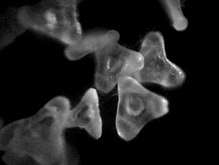Oenothera speciosa
Oenothera speciosa is a species of evening primrose known by several common names, including pinkladies, pink evening primrose, showy evening primrose, Mexican primrose, amapola, and even "buttercups"
| Oenothera speciosa | |
|---|---|
| Scientific classification | |
| Kingdom: | Plantae |
| Clade: | Tracheophytes |
| Clade: | Angiosperms |
| Clade: | Eudicots |
| Clade: | Rosids |
| Order: | Myrtales |
| Family: | Onagraceae |
| Genus: | Oenothera |
| Species: | O. speciosa |
| Binomial name | |
| Oenothera speciosa | |
| Synonyms[2] | |
| |
Distribution
It is a herbaceous perennial wildflower. Originally native to the grasslands of Kansas, Missouri, Nebraska, northeastern New Mexico, Oklahoma, and Texas[3], it has been naturalized in 28 of the lower 48 U.S. states [4] as well as Chihuahua and Coahuila in Mexico. It frequently escapes from gardens. The specific name, speciosa, means "showy".
The plant's wild habitat includes rocky prairies, open woodlands, slopes, roadsides, meadows and disturbed areas. While it makes an attractive garden plant, care should be taken with it as it can become invasive, spreading by runners and seeds. This drought-resistant plant prefers loose, fast-draining soil and full sun.
Habit
The pink primrose has glabrous (smooth) to pubescent stems that grow to 50 cm (20 in) in height. The pubescent leaves are alternate with very short or no petiole (sessile), reaching 10 cm (4 in) long to 4 cm (1 1⁄2 in) broad. They are variable in shape, from linear to obovate, and are toothed or wavy-edged. It produces single, four-petaled, cup-shaped flowers on the upper leaf axils. These fragrant shell-pink flowers bloom throughout the summer into early autumn. The 1 1⁄2–2 in (4–5 cm) flowers start out white and grow pink as they age.
The flower throats, as well as the stigmas and stamens, have a soft yellow color. It blooms both day and night, but typically in the pre-dawn hours, closing when the full sun hits them. They bloom from March to July, and occasionally in the fall. The flowers are frequented by several species of insect, but moths are the most common as the flowers are mostly open at night.
This plant is also frequently referred to as a buttercup, though it is not a true buttercup (genus Ranunculus), or even in the buttercup family Ranunculaceae.
Varieties
- Varieties[2]
- Oenothera speciosa var. berlandieri (Spach) Munz
- Oenothera speciosa var. childsii (L.H. Bailey) Munz
- Oenothera speciosa var. speciosa
Usage
The pink evening primrose is used in the temperate latitudes as an ornamental plant. However, it does not survive a severe winter. It is a ground cover. With the USDA climates 4 to 9, the pink evening primrose in most areas of Central Europe should be sufficiently hardy. The green plant parts can be cooked or eaten as a salad; Harvest, if possible, before flowers develop, because then the taste is pleasant.[5]
Gallery
 A Field of Buttercups or Pink primrose
A Field of Buttercups or Pink primrose- Unopened flower buds.

 pink primrose with bud and leaf
pink primrose with bud and leaf Pollen magnified 200x
Pollen magnified 200x
References
| Wikimedia Commons has media related to Oenothera speciosa. |
| Wikispecies has information related to Oenothera speciosa |
- "Oenothera speciosa". Germplasm Resources Information Network (GRIN). Agricultural Research Service (ARS), United States Department of Agriculture (USDA). Retrieved 28 October 2010.
- "Oenothera speciosa Nutt.". World Checklist of Selected Plant Families (WCSP). Royal Botanic Gardens, Kew. Retrieved 7 December 2014 – via The Plant List.
- "Lady Bird Johnson Wildflower Center - The University of Texas at Austin". www.wildflower.org. Retrieved 3 May 2019.
- "Oenothera speciosa". Natural Resources Conservation Service PLANTS Database. USDA. Retrieved September 4, 2010.
- Jelitto / Schacht / Feßler: The outdoor jewelry shrubs . Ulmer, Stuttgart 1985, ISBN 3-8001-6156-7 .
- Tveten, Gloria; Tveten, John (1993). Wildflowers of Houston & Southeast Texas. Austin: University of Texas Press. ISBN 978-0-292-78151-1.
- Tenaglia, Dan. "Oenothera speciosa page". Missouri Plants. Missouri Botanical Garden.
External links
- Jepson Manual treatment
- Oenothera speciosa photos, Vanderbilt University
- Oenothera speciosa in the CalPhotos Photo Database, University of California, Berkeley